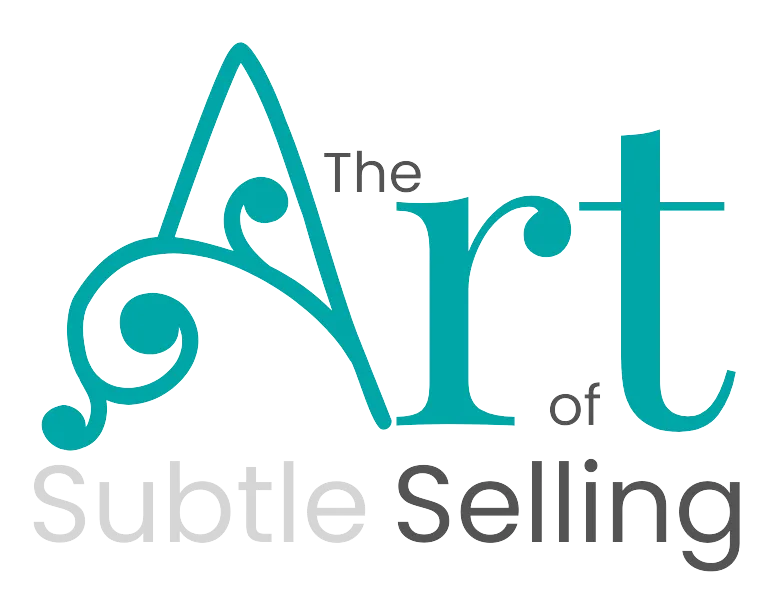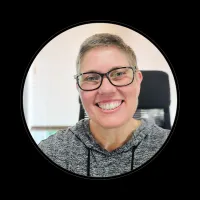
How a Simple Shift in Focus can 2-3x Your Results
Selling has a bad rap and creates a quite a bit of fear in lots of people, so if ‘sell” is a four-letter word to you, you’re not alone!
It’s an interesting phenomenon, where even the most brilliant and outgoing minds, when faced with selling, can shrivel with fear and be unable to consistently move through that process confidently and successfully. For many, the act of selling itself seems to trigger stress and lead to feelings of insecurity, incompetence, insignificance and unworthiness.
There’s just no denying it. Selling can be an emotional rollercoaster. Sometimes, it’s not even the act; rather it’s the thought before the act, that sets the emotional rollercoaster in motion. I call this sales anxiety.
Some experts suggest that to avoid sales anxiety, you need only three things:
• Know your product and FABs well;
• Have the drive to succeed, and
• develop a tough outer skin, impervious to the humiliation of rejection
I’m not “most experts” and I call bullshit!
I will concede the importance of knowing your product is essential, for some types of selling (not all), and a “drive” matters for everything in life; though I believe what they call drive is really the resilience we demonstrate when the inevitable challenges pop up, not drive.
But that bit about developing a “tough skin” that is impervious to the humiliation of rejection? Still nope! Sniff, sniff…. That’s some real bullshit right there. I’m living proof.
I’ve been outstanding in sales for almost 30 years, winning awards from clients many times over – and I struggle with anxiety every day and must do mindset work every day. So, if an impenetrable outer skin is not the answer to the sales anxiety issue, then what is?
What does it really take to feel good about selling and be good at it too? Even when you are an anxious introvert.
In my experience, when a seller goes into the conversation with only one outcome in mind, and is seeking to fulfill their own objectives, they sabotage the process, and the result is more often “no thanks” than ‘yes’.
By simply developing an openness to the many outcomes that are possible, combined with a focus on your buyer’s objectives, you will increase your success rate by at least 2x, very quickly.
For 25 years, I coached sales teams in six industries, to doubling, tripling, even quadrupling their revenues and sales conversions in a matter of months, sometimes weeks.
For six of those years years, I coached Hearing Specialists to sell hearing aids.
In spite of quick and massive success with other companies/industries, using my techniques, these clinicians struggled to increase their conversion rate by even 5% … What was so different between this group of professionals and the previous groups of professionals I’d coached?
Using my own method, I was closing 85%+ of hearing aid sales consistently… so we knew my method worked in the hearing industry. The problem was not the method or technique. So, what was it?
Was it lack of knowledge about the product or purpose?
This was a group of highly intelligent and educated experts in their field who had chosen this field, specifically, to help people. Most had achieved honours in college or university, and I assure you there was no doubt in their mind about their own brilliance and expertise in their field, nor about their desire to help their clients. It wasn’t imposter syndrome or lack of intention.
Was it complacency creating resistance?
Their compensation was heavily weighted on commissions, so if they wanted more financial security, they needed to sell more hearing aids. Many expressed a desire to earn more, yet their sales performance did not improve. So, it was not this either!
Was it just persona?
The other industries I’d coached in had more driver-dominant teams. While most of these clinicians were certainly introverted, all persona types were equally represented in this group, so we could not conclude it was being amiable or introverted, for example. So, then not persona. So what was it?
THE BIG DIFFERENCE: THEIR FOCUS DURING THEIR SALES CONVERSATIONS.
The company’s culture was focused on getting the sale, thus the clinicians focus was also on the sale, by extension. This meant this team were focused on SELF goals in the appointment, rather than on THEM, the potential client’s, goals.
What do I mean by that?
A company’s goals are simple and self-serving: get the customer/make the sale, earn more money every period, and make it as profitable as possible.
Whereas, your buyer’s objectives are more complex: solve my problem and don’t cause other problems in the process. E.G. Solve my hearing problem without making me feel old. Solve my hearing problem without taking all my precious savings. Solve my hearing problem without adding time to my morning routine. And so on.
So, the clinicians were focused on self-serving goals: MAKE THE SALE– plain and simple! This goal focus changes what they said and how they said it.
Whereas the clients were focused on:
👂🏼hear better,
👂🏼save money,
👂🏼feel happy,
👂🏼stop the bickering at home,
👂🏼don’t feel old,
👂🏼don’t let people see them, etc.,
… and often, all happening at the same time.
Much more complex – and completely unaddressed and unresolved by the clinician’s approach. The patient waited to hear about how the solution will solve these problems that are so important to them, but they were never addressed.
Unfortunately, to achieve that “make the sale” goal, the clinicians were rushing through discovery and spending very little time understanding their client’s perception of their own experience, needs, fears, challenges and so on, and making educated assumptions and going from there. No one ever asked the client about their thoughts on the solution other than to ask for the sale.
Instead, they spent significantly more time on testing and then telling the patient what the problem is (hearing loss) and why they need the solution (hearing aids). Overall, they were waiting until they had asked for the sale and gotten objections before they spent any time understanding this client’s real needs and priorities… the ones below the surface of every person with hearing loss.
To the clinicians, the process of gathering and providing evidence (through testing) was the most important part of the appointment and believed should be sufficient to motivate their potential client to take action.
They were very wrong and their KPIs showed it report after report.
What they were really doing, was feeding their own need to be sure the person in front of them had hearing loss (the problem) before they asked them to buy something. It was a justification to pitch.
They failed to see how the problem of hearing loss was creating other problems for this patient that mattered MORE than just not hearing – and that each patient would have unique problems that came from their hearing loss.
So, by focusing on the test results, rather than the uniqueness of this person, the clinicians were only soothing themselves and building confidence that their product (hearing aids) would solve the problem (hearing loss) before they pitched it.
They were not addressing the client’s needs and so the client often felt unclear and uncertain. When a potential client does not feel as confident about the information provided, as you do, they will typically say no, or “let me think about it”.
This is pretty standard in the traditional and most common sales techniques being taught. The seller builds confidence their product will solve this problem by asking a few key questions, and then pitches. This means the seller does the majority of talking as they share the great features, advantages and benefits of their product. The focus is on what I want/need.
This was the model and focus of the clinicians – justify then make the sale.
And they hated it! Like you, they felt gross, pushy, manipulative, lacking in integrity, fearful, sleazy, and anxious.
This emotional state and aversion to selling showed in their poor results. But unless they were willing to change their approach, they would continue to slam their head into a wall and not create the level of income they wanted.
So change… was a must!
THE SOLUTION
How we changed their focus…
While a decent amount of mindset work was essential to making the changes in technique, we’ll skim past the mindset work for the sake of the focus of this case study!
Just know, that when you want to make a change in your technique, you usually need to do the mindset work that goes with it! Changing habits is not an overnight thing!
Now, you may also be experiencing the kind of resistance to change my clinicians did, right now, because it all sounds like a lot of work to implement change in how you sell!
If that’s how you’re feeling and you’ve come this far, I hope you will now experience the deep sigh of relief they did when we started with baby steps.
Start with one simple technique that changes the course of your appointment and leads to substantial increases in sales, client retention, referrals and seller satisfaction with the process! (yep, that’s a lot of pressure on one little technique and this one delivers!)
Empathy Opening:
Enter the empathy opening, a technique I’ve been using and teaching for many years that focuses on what your buyer’s goals are, from the very start of the appointment. This technique has four components to it Preparation, Prompting, Process, Payoff.
What really makes this technique work is proactively addressing the big elephants in the room. MONEY, TIME, & REPUTATION.
It very quickly builds your client’s trust and your confidence – win-win! Here is an example of an empathy opening clinicians started to use:
“Bill, thank you so much for meeting with me today. A lot of people are reluctant to get their hearing tested; I’m wondering what motivated you to book this appointment today?”
(Once Bill has shared what he’s currently experiencing (the problem), thank him, recap what he said and then proactively address the elephants in the room and EMPOWER the client:)
“In preparation for our appointment today, I took some time to consider some of the questions you might have about what will happen today and what to expect. For example, you might be wondering how much hearing aids cost or whether you have to wear two, or maybe you’ve even wondered whether your results affect your driver’s license. Were you wondering about anything like that?
Allow the client to respond and then continue with the rest of your opening. For more details about how the empathy opening is structured, I’ve done two separate workshops that I’d be happy to send you a link to watch.
This approach reduces the tension, empowers the client, and makes their goals the priority.
For the client, you’ve just told them it’s all about them and their goals; and that puts them at ease to believe you’re not going to steamroll them – and that exponentially increases trust.
For you, it takes the pressure off you, you feel good about helping them achieve their goals and that increases your confidence because now it becomes about the problem-solver you are… not the seller you are!
THE RESULTS
Did it work?
So, what happened when the clinical team started implementing the empathy opening as their standard practice?
🎉Those who did: doubled, and consistently hit 50% or higher conversions and earned huge commissions!!
👎🏼Those who didn’t: stayed exactly where they were and complained they didn’t make enough money.
The moral of the story is that the simple change to a focusing on your buyers’ goals, instead of your own, can lead to incredible returns in sales, profit, and confidence. Okay, it’s not that simple because changing any habit requires time and intentional effort…. And your current selling technique is a habit!
BUT IT IS ABSOLUTELY DOABLE!!
So, today’s questions:
“Whose goals are you focused on in your sales?”
Could a simple reversal of whose goals you focus on in the call be the solution to all those empty time slots in your calendar?
The empathy opening is just one technique I coach clients to use to consistently 2-3x their conversions.
My process, that I share and teach you, is client-focused, empathic and empowering because that’s what feels best for your potential clients… which in turn, helps you feel relaxed and confident when you’re ‘selling’.
Many of my private clients have expressed this empathy opening was the total game-changer for them on its own. I have a handout exercise, I’d be happy to share, if you’d like a copy. Connect with me on Facebook and let me know you're interested in receiving that. I'll share it with you.
That's all for today, folks!
Danielle 🤘🏼
Audio Trainings & Insights
Listen to My Audio Trainings
Click play to gain insights on The Subtle Art of Selling.
Preventing Objections & Empathy Opening
Solopreneur Summit
Screeing Vs Qualifying in Sales
The Flamingo Podcast
Getting Comfortable with the Unknown
Chaos to Clarity Podcast 2024
Want more? Check out my full training library on YouTube! @artofsubtleselling

